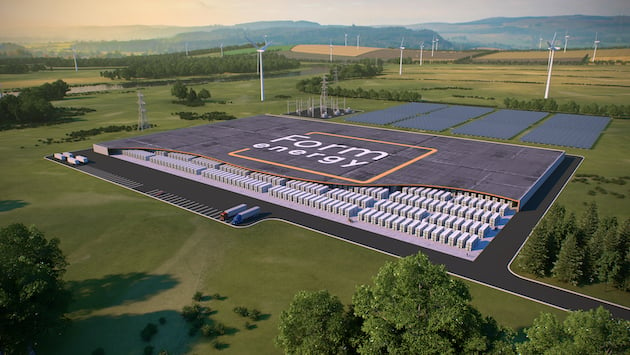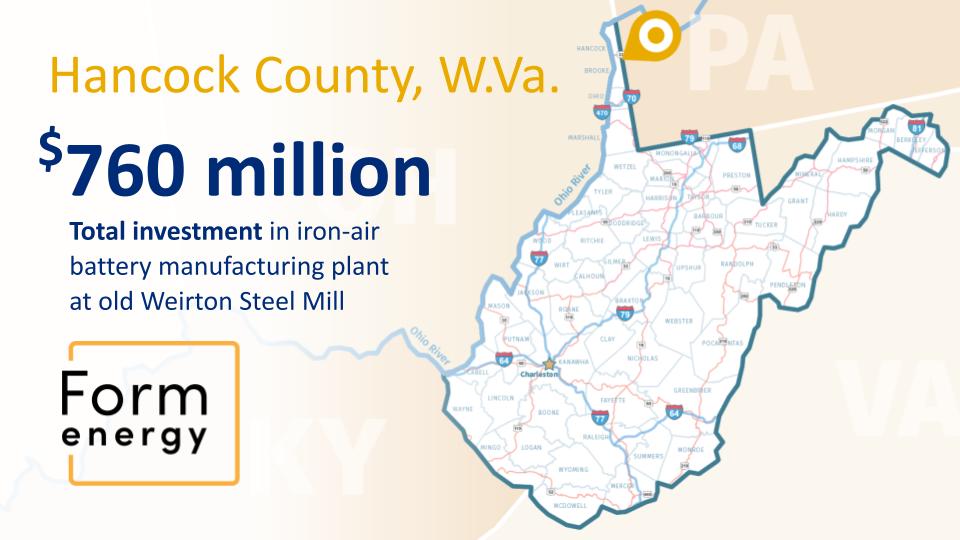
Mateo Jaramillo, CEO of long-duration energy storage startup Form Energy responds to our questions on 2022 and the year ahead, in terms of markets, technologies, and more.
Form has been developing a battery chemistry based on iron and air that the company claims will offer up to 100 hours of low-cost energy storage designed and built using abundant, non-toxic materials.
Enjoy 12 months of exclusive analysis
- Regular insight and analysis of the industry’s biggest developments
- In-depth interviews with the industry’s leading figures
- Annual digital subscription to the PV Tech Power journal
- Discounts on Solar Media’s portfolio of events, in-person and virtual
That means – if the company’s work can pay off and create a mass production, commercial product from its advances in the lab – that several days of low wind or solar PV output will be less of an issue for utilities and grid operators.
A team from Form Energy aimed to prove this in a September blog for this site, applying the example of long-duration energy storage (LDES) such as Form’s battery together with grid modelling analysis, to California’s energy sector. Long-time readers might remember a similar blog on the role of LDES in grid reliability and resilience from Form Energy contributed to Energy-Storage.news following Texas’ Winter Storm Uri in 2021.
Jaramillo, formerly a part of the Tesla Energy team that launched its stationary battery energy storage system (BESS) business, talks below about some of the company’s milestones to date, the role of long-duration energy storage on the grid of the future, and how to unlock “billions of dollars in savings” for electric ratepayers while creating “tens of gigawatts of demand” for LDES.
What did 2022 mean for your energy storage business, and how did the year compare with 2021?
2022 was a productive and exciting year for Form Energy. In February, we announced a collaboration with Georgia Power, the largest electric subsidiary of Southern Company, to identify an optimal project application of up to 15MW/1,500MWh of energy storage systems to be located in the utility’s service area.
In October, we closed a US$450 million Series E financing round led by TPG’s global impact investing platform, TPG Rise.
We also led a year-long, robust nationwide selection process for the site of our first full-scale battery manufacturing plant. Our team started by identifying over 500 candidate locations across 16 states, narrowing the search to three locations. After evaluating several promising manufacturing site locations, we landed on a great site in Weirton, West Virginia. We made the announcement to locate in Weirton alongside West Virginia Governor Jim Justice in December.
In 2021, we were primarily focused on continued rigorous R&D and testing of our 100-hour iron-air battery and were pleased to announce the chemistry in July of 2021. In 2022, we continued product engineering and validation, and began to lay the foundation to scale up our technology and prepare for manufacturing.
What were some of the biggest gains and steps forward made by the industry, including your company, during the last 12 months?
It is exciting to see that long-duration energy storage is starting to take hold in new markets. For instance, in a first among states, California approved US$126 million in incentives to demonstrate new long-duration storage technologies.
Massachusetts came out with its 2022 Massachusetts Climate Bill, which recognises the potential of long-duration and other storage technologies to enable the state’s ambitious climate goals.
And most recently, New York State awarded US$16.6 million to five long-duration energy storage projects.
We are now active in each of those states and believe that the demonstrated leadership will result in very meaningful climate impact. And of course, Congress passed the Inflation Reduction Act (IRA), which is a massive benefit for deployment of renewable energy technologies.

The industry faced some well-documented challenges during the year, with the highest profile being supply chain constraints. How have those challenges affected the industry and how should they be confronted?
We believe that to meet supply chain challenges and to run the grid reliably and affordably, we need new domestically manufactured energy storage technologies capable of cost-effectively storing electricity for multiple days, during extended periods of extreme weather, grid outages, or low renewable generation.
Form Energy was founded to address this need. The active components of our iron-air battery system are some of the safest, cheapest, and most abundant materials on the planet — low-cost iron, water, and air.
Which technology and industry trends would you recommend our readers keep a close eye on in 2023?
The electric grid now faces a challenge: how to manage the multi-day variability of renewable energy without sacrificing reliability or cost.
In fact, many battery technologies on the market can only provide, at most, four to six hours of energy storage at full rated power. We recommend keeping a close eye on the technologies that can solve for energy storage over multiple days, reliably and affordably.
What are the biggest priorities for your company, and for the wider industry, in 2023 and beyond?
We expect to start construction of our Weirton factory early this year and begin manufacturing iron-air battery systems for broad commercialisation starting in 2024. Ramping up for commercial manufacturing is our top priority in 2023.
Beyond 2023, our internal analytics, validated with utility partners, predict that over the next decade, achieving Form’s cost and performance targets will unlock tens of gigawatts of demand for multi-day storage in the US and accelerate the country’s trajectory towards a fully decarbonised and more reliable and resilient grid.
At such levels of deployment and scale, Form’s technology will catalyse billions of dollars in savings to American electricity consumers and help address energy access concerns. As our technology is deployed globally, we believe similar benefits will accrue.
But there are challenges that must be addressed in order to realise the full market potential in the U.S.
For instance, grid modeling is a key area that needs to adapt to the evolving mix of resources we will see coming on to the grid in the next decade. Regulators and grid operators need new tools that compensate for the full value stack of resources, such as Form’s 100-hour battery, that can provide reliability, resiliency, decarbonisation, address constraints on the transmission and distribution system, serve as hedge in tight power markets, and provide other agility like microgriding.
Existing markets were designed with entirely different resources and a largely combustion-driven grid in mind. Grid planners need new modeling tools that identify the investments necessary to maintain reliability across the hour to hour, day to day, week to week, season to season, and year to year variability that characterises high renewables grids.
We developed (our solution) Formware with this need in mind. While incumbent grid planning tools recommend investments based on modeling of tiny snippets of “typical” weather conditions, taking for example one day or one week per quarter of average weather, Formware is a state-of-the-art grid planning tool that recommends cost-minimising infrastructure investments and operations based on the full diversity of weather and grid conditions that grid operators face in reality.
Energy-Storage.news’ publisher Solar Media will host the 5th Energy Storage Summit USA, 28-29 March 2023 in Austin, Texas. Featuring a packed programme of panels, presentations and fireside chats from industry leaders focusing on accelerating the market for energy storage across the country. For more information, go to the website.

